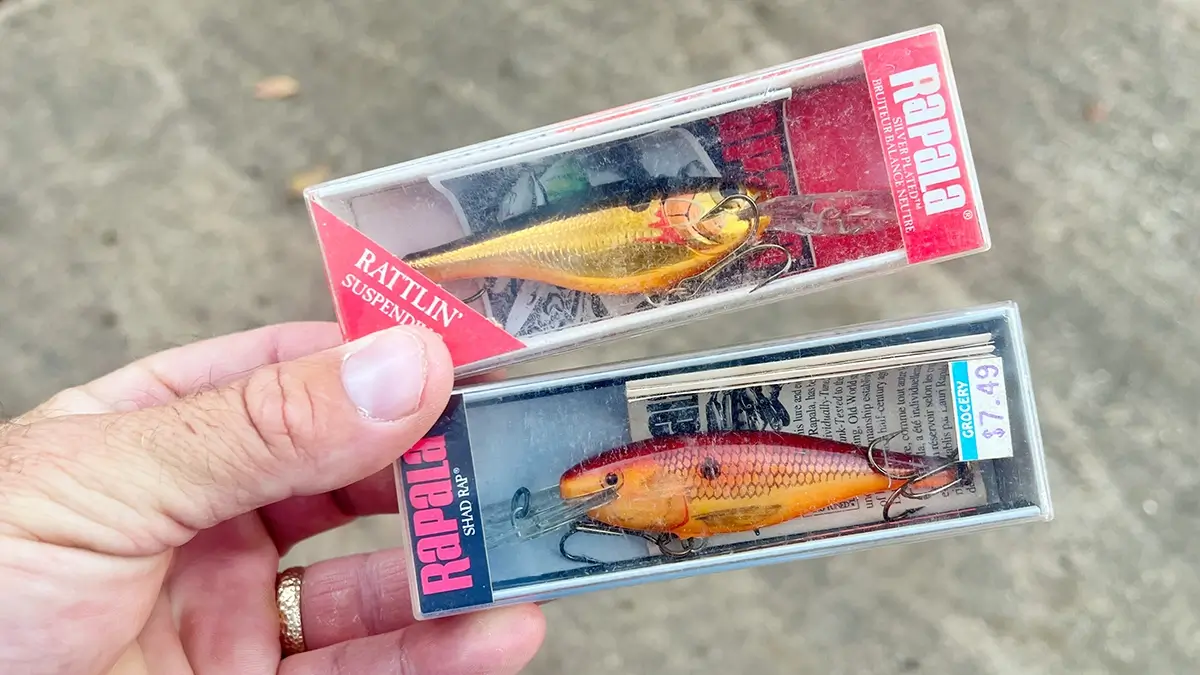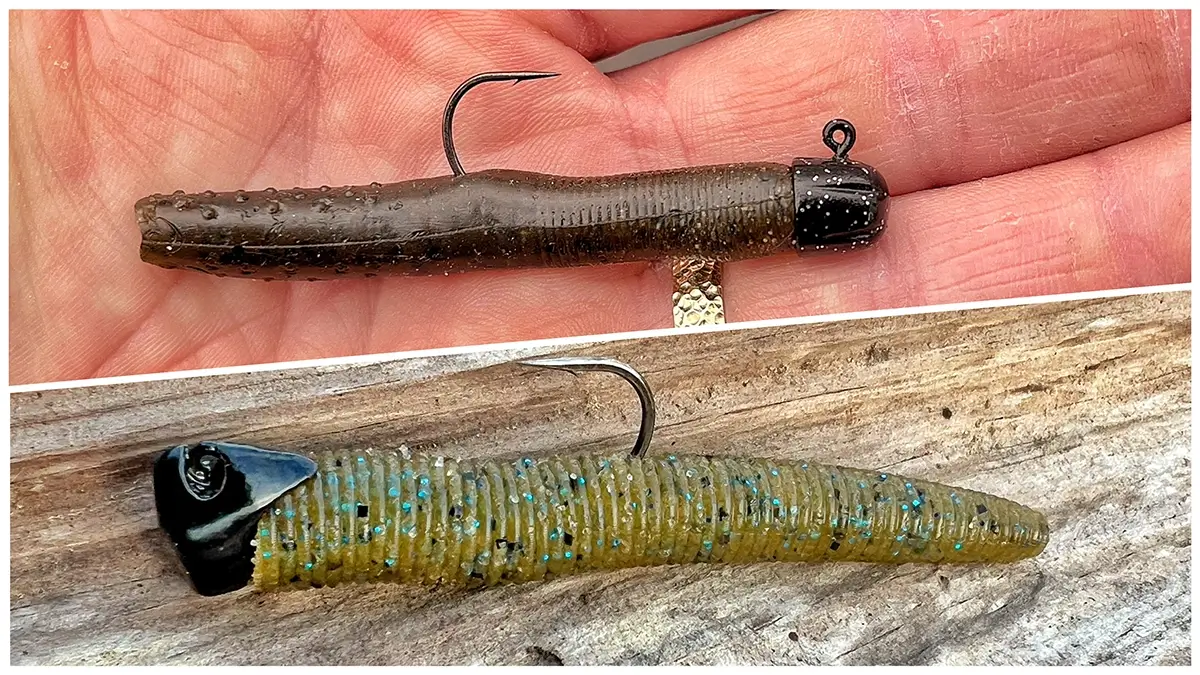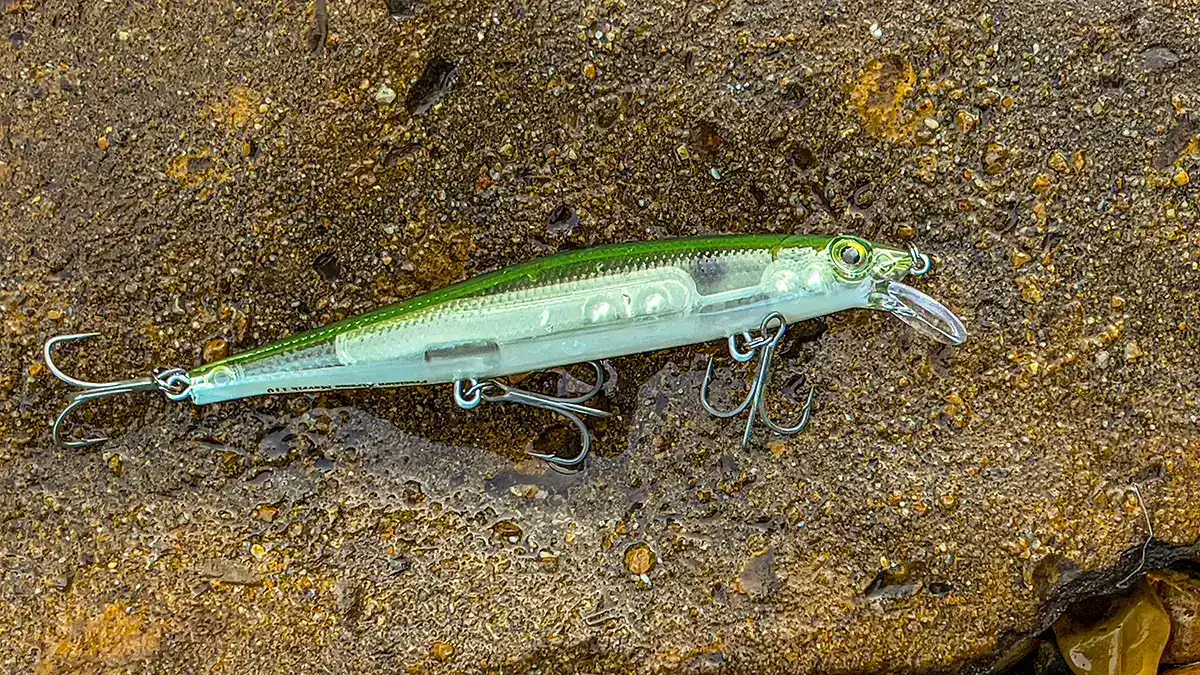December can be a challenging month for fishing across much of the country. Even if you live in the far reaches of southern Florida, the occasional cold front can still wreck the fishing. And it’s even worse up north, where some of the lakes will begin to freeze over soon. There are still fish to be caught however. Here’s what lures we’re throwing in December to catch them.
Southeast
Though the start of winter is still technically a couple weeks out, it feels as though it has already settled in near my home in the southeast. The last couple weeks have seen nightly lows in the 20s and 30s and the days have rarely broken the 60 degree mark. Now, where you come from that may not seem like much. But here in central Alabama, that’s a swift smack in the face considering it was nearly 80 degrees a couple weeks ago.
With this cold weather comes tougher fishing, for a few days anyway. We have to mush through the next couple weeks as the annual fall turnover comes and goes. But once the water stabilizes and those water temps settle in around the 50 degree mark, the fishing will actually get really, really good.
December is the time of year when jigs, Ned rigs, crankbaits, spinnerbaits, Damiki rigs, umbrella rigs and jerkbaits all work really well. We’re going to focus this portion of the conversation on crankbaits, Ned rigs and spinnerbaits.
Crankbaits
As we saw in November, you can catch bass on several different types of crankbaits in December. This is because there are lots of fish to be caught in the 1- to 8-foot range. So everything from squarebills to medium divers to flat-sided crankbaits work well. One of the best crankbaits though for water temps at or below the 50 degree mark is the Shad Rap.
The Rapala Shad Rap has long been synonymous with wintertime cranking. It and other baits like it are often referred to collectively as finesse crankbaits. These lures have elongated bodies, long bills and very tight wobbles. Thanks to their designs, you can get them down to the bottom quickly and keep them there with little effort. This allows you to cover an area thoroughly and slowly, which is key to getting bit in cold water. Finesse crankbaits are also very versatile. You can fish them around rock, over clean bottoms, around docks and through woody cover like laydowns and brushpiles.
Because these baits are typically really light, most anglers fish them on spinning gear. But you can find some newer finesse crankbaits with internal weight transfer systems and swap over to baitcasting gear if you’d like. Jerkbait rods typically double as good finesse crankbait rods. I’ve really enjoyed fishing light baits on the 7’2” Medium/Moderate SPRO RkCrawler Crankbait Casting Rod this past year, and I’ve already designated this as my rod for finesse crankbait fishing this winter.
Check out this article for more on finesse cranking in the winter.
Ned Rigs
A Ned rig is the nearest-nothing-looking bait out there. That has become my seemingly derogatory go-to way of describing the Ned rig any time someone asks me about it. But I don’t mean it as an insult. No bait gets bit better than a Ned rig. It’s the easiest bait for an angler of any skill level to catch fish on. And it’s especially effective in cold water. But it is the least appealing bait to look at of all the shiny and bright ones in my tackle box. Half a Senko on a jighead, that’s basically what you’ve got. But boy does it catch them.
My favorite bait for the Ned rig is the Z-Man Finesse TRD. At 2.75 inches, this tiny little morsel can fit in the mouth of nearly any fish. But this is the standard size of most Ned baits. What sets the Finesse TRD apart is the ElaZtech material that Z-Man uses to make the bait. ElaZtech is both super buoyant and extremely durable. These two characteristics make for an awesome Ned rig bait.
Because the material floats, the tail of the TRD stands straight up in the water. And since it’s super stretchy and durable, you can catch dozens of bass on just one bait. With 8 in a pack, you could literally catch a hundred bass for five bucks, provided you don’t break off your jighead. When it comes to jigheads, the Picasso Rhino Ned Head is probably my favorite. It has a strong hook, a recessed eye and the bait can kind of tuck up under the head nicely to create a streamline look.
You can catch bass on a Ned rig from just a couple feet of water out to 30 or more in the winter. Ideally you’ll want to find fish relating to fairly clean bottoms and drag the bait slowly along the bottom. But you can certainly fish a Ned rig around chunky rock and wood as well. There are several Ned head options that have weedguards for those scenarios. And, if and when you do get hung, you can often free your bait by positioning yourself behind where you’re hung up and pulling the bait backwards.
Spinnerbait
One of my favorite baits to fish in December is one that a lot of people overlook — the spinnerbait. Spinnerbaits have fallen off a bit in popularity over the last couple decades, and even more rapidly recently with forward-facing sonar dominating on most fisheries. But a good ole spinnerbait shallow is still a great way to get bit in December, especially by a big bass.
A double Colorado blade spinnerbait is the gold standard for cold water spinnerbait fishing. The two round blades give off a hard thumping vibration as well as a considerable amount of flash. These two come together to attract a bass’s attention both by feel as well as by sight. There’s also another added benefit to these big blades, they force you to fish the bait slow.
Because Colorado blades create a lot of resistance, they cause the bait to lift in the water column. To keep the bait down, you have to slow your retrieve down. And this is something that’s necessary anyway for getting bass to bite a spinnerbait in water around the 50 degree mark. So, in effect, fishing with a double Colorado spinnerbait forces you to “slow roll” it, and slow rolling a spinnerbait around shallow cover is a great way to get bit in December.
Checkout this article for more on slow rolling a spinnerbait.
Texas: Tyler Anderson
“I’m throwing a suspended jerkbait a ton, deep and shallow. There’s not really any rhyme or reason why they’re deep or shallow, you just kind of have to try both of them. Some days they may be up shallow in 2 feet of water on rocks, but rocks are the key thing. I don’t really throw a crankbait a whole lot because I can fish the jerkbait leaving it there for 10 seconds or working it really fast.
[If you have forward facing sonar with the jerkbait]
“Most of the time, this time of the year, if I’m shallow I’m not using it to actually scope fish. I’m looking for drop offs and rocks and that kind of stuff, because I’ve found that they’re just hugging the bottom. Unless I pan out in the middle and I see one chasing bait, which then of course I’m going to actually use forward facing to look at that fish. But most of the time, similar to how I use it for grass in the prespawn, I’m going to use it so that I can make more targeted casts with it.
[If you don’t have forward facing sonar with the jerkbait]
“You just have to find rock, and expect that rock may look different when it pops off the bank as opposed to on the bank. So the slope may not be the same or it may be totally the same. If an area looks good with rocks sticking off of a point, don’t just fish that point but fish off to the sides as well because there may be some hidden stuff there that you didn’t know was there.
“And especially look for transitions. If you’re going to go down the bank with the trolling motor on high and you’re only going to make 100 casts, make them at the areas that have rocks to mud or rocks to sand and that kind of stuff.” — Tyler Anderson
Georgia/Carolinas: Bryan New
“Everybody who knows me knows I’m not a one-rod Todd; I’m going to have 112 rods on deck. But to keep it somewhat simple, I’m going to have two or three jigs. I’m going to have a standard jig with a regular silicone skirt in half ounce, in any natural craw type of color. I’m old school so I like the chunk style trailer on the back of a Greenfish Tackle All Purpose Jig.
“I’m also going to have a bigger rubber jig. When I’m doing that, I’m going to go with a ½- or ¾-ounce Greenfish Tackle Little Rubber Jig; it’s called “Little Rubber” because it has finer cut rubber strands. My third jig is going to be the ⅜- or ½-ounce BLD (Greenfish Tackle Bad Little Dude). It’s a small, compact jig.
“I’m going to go with the Little Rubber Jig if I’m fishing in a little bit more color, if I’m just looking for a big bite or if it’s just a nasty day. That’s when I kind of like that better. Then the standard All Purpose Jig, I like it more for when I’m skipping docks or fishing brush, that type of stuff. And then of course the BLD when I need to catch one more keeper.
“And you got to have a jerkbait. The winter time is when you want that dead action out of a jerkbait. The water is cooling off drastically and it’ll shock the bait and you’ll start having those shad die offs. That’s when you really want a more dead action, and that’s when the SPRO McStick really shines. They’ve got different sizes and different depths, so you can cover whatever you need there.
“Man you’ve got to have a crankbait. When I’m going cranking, I’m looking for stained water, wind blown banks and nasty days as well. Any kind of hard cover, boat ramps, natural rock, rip rap, seawalls and even docks.
“A crawfish color is going to be my number one, and I just match that crawfish color to the water color. If it’s really dirty I’m going to throw something with more bright reds and bright oranges. If it’s cleaner, I’m going to have something with a toned down orange or red. I do want orange or red, but how bright or how dull it is determined by the water color.
The SPRO Speed Demon, the Little John and the Little John MD, those are the three I don’t leave home without. Those are my three cold water, winter time, pre-spawn crankbaits.” — Bryan New

















